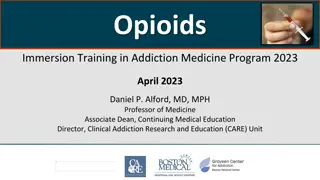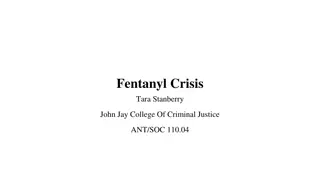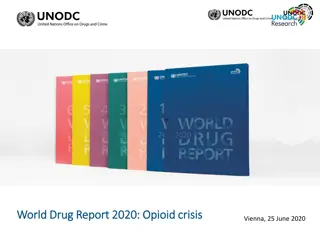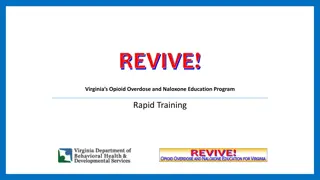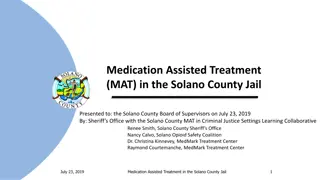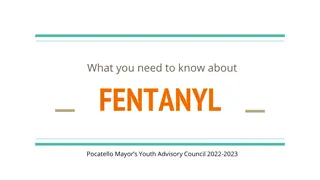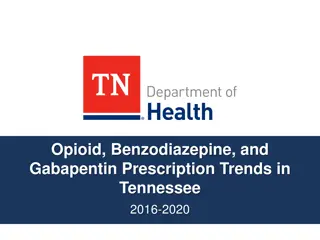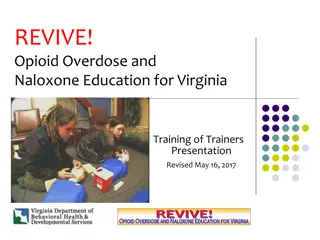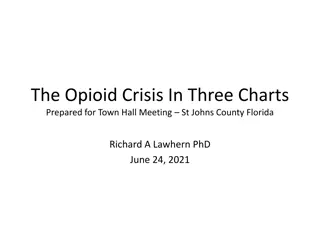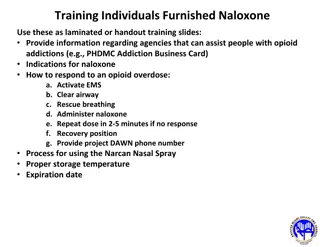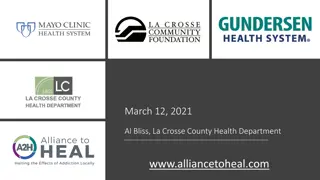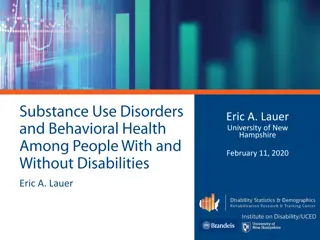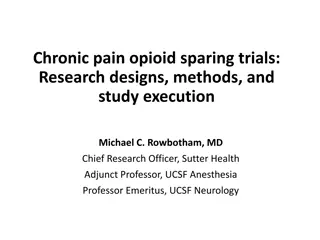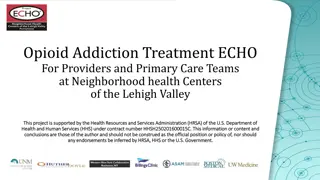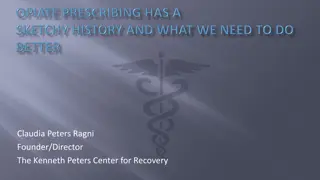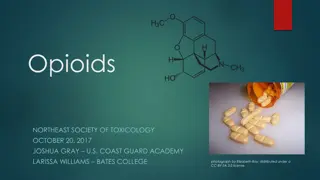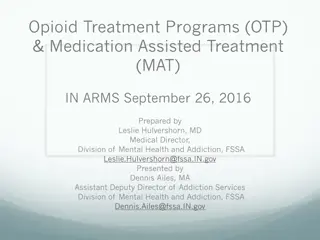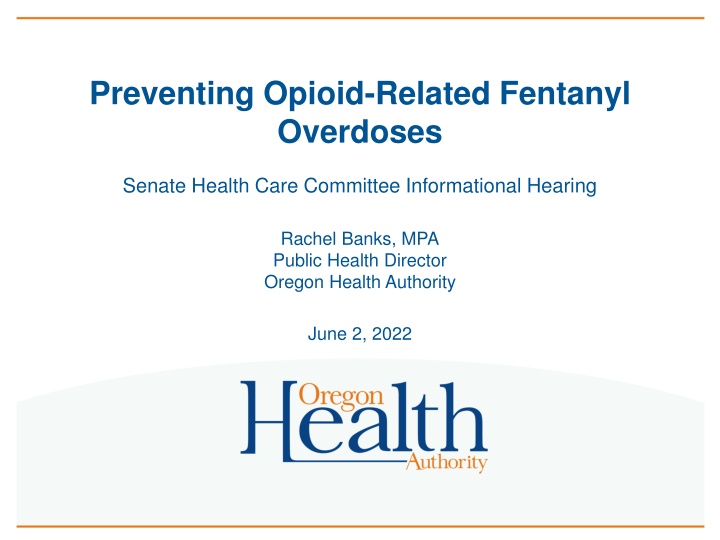
Addressing Opioid-Related Fentanyl Overdoses: Current Trends and Implications
Explore the evolving landscape of opioid-related fentanyl overdoses, with a focus on changing overdose patterns, rising seizure rates, and increasing overdose deaths from stimulants, heroin, and synthetic opioids in Oregon. Learn about the continued trends in 2021, as reflected in emergency department and urgent care visits.
Download Presentation

Please find below an Image/Link to download the presentation.
The content on the website is provided AS IS for your information and personal use only. It may not be sold, licensed, or shared on other websites without obtaining consent from the author. If you encounter any issues during the download, it is possible that the publisher has removed the file from their server.
You are allowed to download the files provided on this website for personal or commercial use, subject to the condition that they are used lawfully. All files are the property of their respective owners.
The content on the website is provided AS IS for your information and personal use only. It may not be sold, licensed, or shared on other websites without obtaining consent from the author.
E N D
Presentation Transcript
Preventing Opioid-Related Fentanyl Overdoses Senate Health Care Committee Informational Hearing Rachel Banks, MPA Public Health Director Oregon Health Authority June 2, 2022
The changing overdose epidemic Prescription medications Illicit drugs Fewer deaths & overdoses from Rx medications More deaths & overdoses from illicit drugs 2
Seizures of fentanyl are increasing Fentanyl Seizures -Oregon HIDTA Counties 2021 Fentanyl Seizures by HIDTA County 339,136 1,400,000 400 400,000 350 1,200,000 350,000 231,460 300 1,000,000 300,000 Number of Seizures 250 Dosage Units Dosage Units 250,000 800,000 136,054 200 200,000 600,000 150 80,345 150,000 55,134 400,000 46,577 32,893 100 31,847 24,213 100,000 2,268 200,000 50 50,000 629 525 0 0 0 2016 2017 2018 2019 2020 2021 Dosage Units 200 1,917 690 101,859 713,029 1,323,189 Number of Seizures 6 32 24 38 107 351 Dosage Units Number of Seizures *This data is specific to HIDTA counties, not all counties in Oregon 3 Data compiled from PMP, collected from Oregon High Intensity Drug Trafficking Areas (HIDTA) county seizures; photos collected from drug seizures in Oregon
Overdose deaths from stimulants, heroin and synthetic opioids are rising Unintentional drug overdose death rate, Oregon, 2016-2020 8.00 7.00 6.00 Rate per 100,000 population 5.00 4.00 3.00 2.00 1.00 0.00 2016 2017 2018 2019 2020 Year Heroin Stimulants Synthetic Opioids Prescription Opioids Source: Oregon Vital Records (Deaths), OHA Center for Health Statistics 4
These trends have continued through 2021 Unintentional/Undetermined Total Drug Overdose Deaths, Oregon, Jan 2019 Oct 2021* 120 100 80 60 40 20 0 Jan Feb Mar April May June July Aug Sept Oct Nov Dec 2019 2020 2021 *2021 data is preliminary and subject to change Source: Oregon State Unintentional Drug Overdose Reporting System (SUDORS) 5
Emergency department and urgent care visits are up Source: January 2022 Monthly Opioid Overdose Data Report 6
Some groups bear disproportionate burden of overdose death Source: Oregon State Unintentional Drug Overdose Reporting System (SUDORS) 7
Youth overdoses are rising but represent a small proportion of all overdose deaths Unintentional/undetermined drug overdose deaths by year, Oregon, 2019-2021 Ages 0-17 Ages 18-24 Ages 25-44 Ages 45-64 Ages >=65 Year Total 2019 ** 33 (7%) 212 (43%) 211 (42%) 38 (8%) 496 2020 5 (<1%) 68 (10%) 312 (44%) 262 (37%) 56 (8%) 703 2021* 15 (1%) 77 (8%) 422 (43%) 392 (40%) 66 (7%) 972 *Many overdose deaths in 4th quarter of 2021 are not included **Numbers <5 are suppressed to protect potentially identifiable data Due to rounding errors and suppression, numbers may not add to 100 8 Source: Oregon State Unintentional Drug Overdose Reporting System (SUDORS)
Youth overdoses are rising but represent a small proportion of all overdose deaths Unintentional/undetermined fentanyl overdose deaths by year, Oregon, 2019-2021 Ages 0-17 Ages 18-24 Ages 25-44 Ages 45-64 Ages >=65 Year Total 2019 0 (0%) 11 (15%) 48 (67%) 11 (15%) ** 71 2020 5 (2%) 44 (19%) 128 (56%) 46 (20%) ** 226 2021* 11 (2%) 60 (13%) 230 (50%) 132 (29%) 22 (5%) 455 *Many overdose deaths in 4th quarter of 2021 are not included **Numbers <5 are suppressed to protect potentially identifiable data Due to rounding errors and suppression, numbers may not add to 100 9 Source: Oregon State Unintentional Drug Overdose Reporting System (SUDORS)
Overdose prevention needs culturally and community specific responses Affordable, geographically accessible, culturally responsive services: Substance use disorder treatment Mental health services Harm reduction (naloxone kits & training, sterile syringes, fentanyl test strips) Housing support Non-opioid pain management services, tools & education 11
State & local level response Harm reduction Multi-sector Continues to evolve Essential aspect of COVID pandemic response & recovery Must address immediate crisis and root causes Emergency response & planning Address root causes Access to preventive health care Substance use & mental health treatment Future needs: Stigma reduction Fentanyl education Focus on methamphetamine Data system improvements Non-opioid pain management Safer prescribing 12
Fentanyl test strips Syringe services Naloxone & training Harm reduction Harm reduction components components Stigma reduction Low-barrier housing Crisis support Employment opportunities Peer Connections to treatment connections https://www.hhs.gov/overdose-prevention/harm-reduction https://www.samhsa.gov/find-help/harm-reduction
We should move upstream and implement a shared risk and protective factor approach Protective factors for drug use Strong and positive family bonds Positive self-image Emotional self-regulation Positive peer group Availability of faith-based resources and after-school activities Academic success Hate-crime laws Policies limiting the availability of alcohol Risk factors for drug use Genetic predisposition to addiction or exposure to alcohol prenatally Mental health issues Adverse Childhood Experiences: ACES Neighborhood poverty and violence Racism and lack of economic opportunity Poor social coping skills Affiliations with peers displaying negative behaviors Perceptions of approval of drug-using behaviors in family, work, school, peer, and community environments 14

